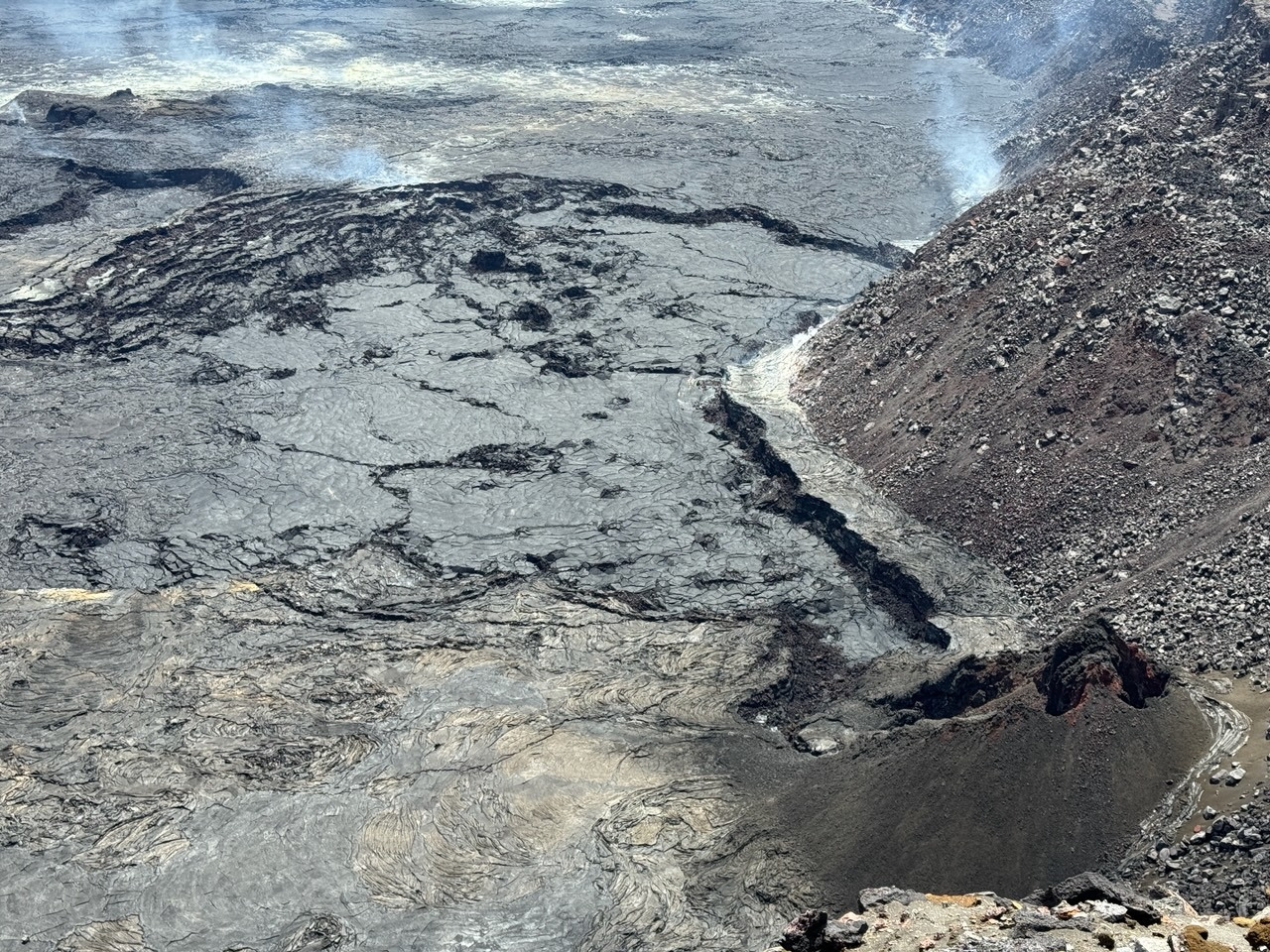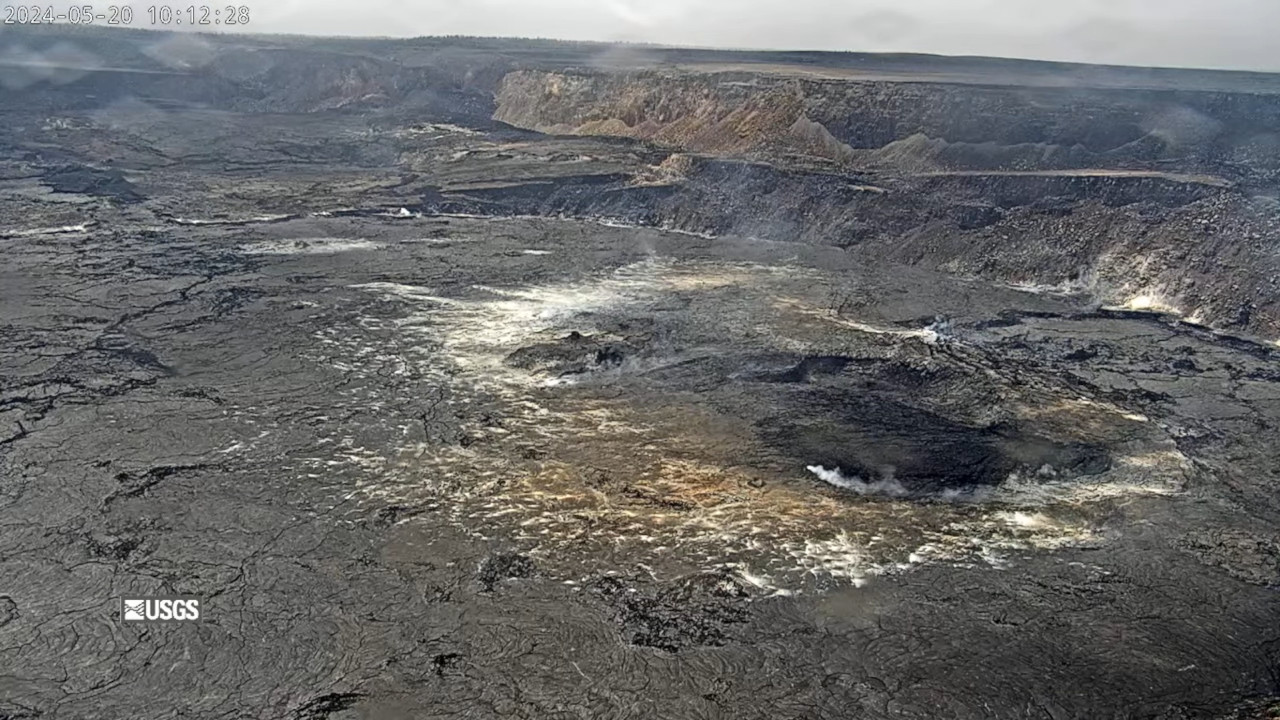(BIVN) – Kīlauea is not erupting, and the USGS Volcano Alert Level remains at ADVISORY.
Earthquake rates appear to be slowing down, scientists report, although they note that could change at any time.
In a Monday activity update, the USGS Hawaiian Volcano Observatory said unrest continues beneath the upper East Rift Zone, while the summit and south caldera have returned to background levels.
From this morning’s summit and Upper East Rift Zone observations:
Over the past day, earthquake counts along the UERZ are above background levels. Earthquakes in the summit and south caldera are at background levels. Earthquake depths have averaged 1–3 km (0.6–1.9 miles) beneath the surface, and magnitudes have been mostly below M2.0. For now, earthquake rates appear to be slowing down, but that could change at any time.
Ground deformation continues beneath Halemaʻumaʻu and the south caldera region. The Uēkahuna tiltmeter northwest of the summit registered flat tilt over the past day. At the same time, the Sand Hill tiltmeter southwest of the summit showed flat tilt.
Sulfur dioxide (SO2) gas emission rates remain low. An SO2 emission rate of approximately 62 tonnes per day was recorded on May 2.

USGS: “A close up of the cone that formed in the June 2023 eruption, at the southwest end of Halema‘uma‘u crater, at the summit of Kīlauea. Lava from the vent poured into a ponded region, which later drained as the eruption waned.” (USGS photo by M. Patrick)
Rift Zone Observations: Elevated seismic activity in the Upper East Rift Zone is scattered along this zone. Currently, seismicity in Kilauea’s Southwest Rift Zone is relatively low outside the summit region. Measurements from continuous gas monitoring stations downwind of Puʻuʻōʻō in the middle East Rift Zone remain below detection limits for SO2, indicating that SO2 emissions from Puʻuʻōʻō are negligible.
Analysis: Magma has been pressurizing the system beneath Halemaʻumaʻu and the south caldera region, activating seismicity in the upper East Rift Zone, and in the caldera south of Halemaʻumaʻu. At this time, it is not possible to say whether this increase in activity will lead to an intrusion or eruption in the near future, or simply continue as seismic unrest at depth. Changes in the character and location of unrest can occur quickly, as can the potential for eruption.
The USGS Hawaiian Volcano Observatory says it will continue to provide daily updates while the current level of unrest continues.
Should volcanic activity change significantly, a Volcanic Activity Notice will be issued, scientists say.


by Big Island Video News12:17 pm
on at
STORY SUMMARY
HAWAIʻI VOLCANOES NATIONAL PARK - Scientists say earthquake rates at Kīlauea appear to be slowing down, with the summit and south caldera at background levels.